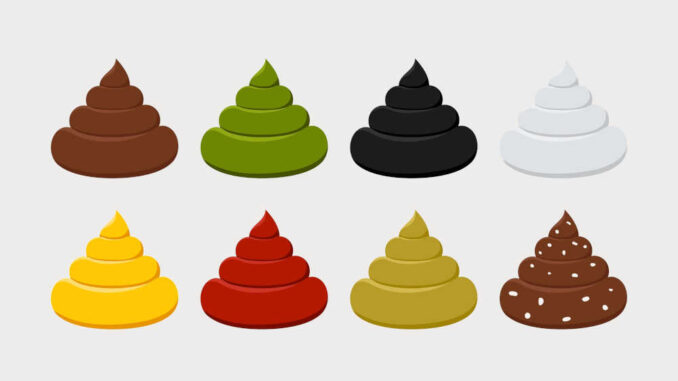
This article was updated on May 31st, 2023

Dog poop comes in nearly all colors on the spectrum. Some colors may be alarming, and some may be worrisome. Find out what the color of your dog poop may mean and what you should do about it.
What Color Should Dog Poop Be?
Normal dog poop should be brown. It may vary in shades from light tan to dark chocolate color depending on your dog’s diet, as shown on the color chart below.
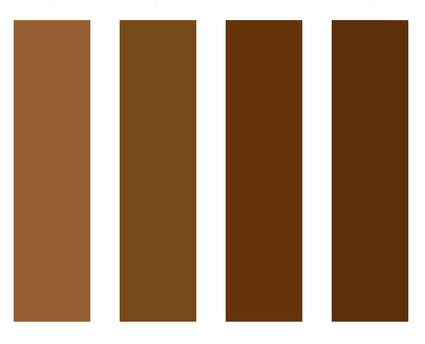
It should also have a formed consistency that is soft, yet holds a tube-like shape.
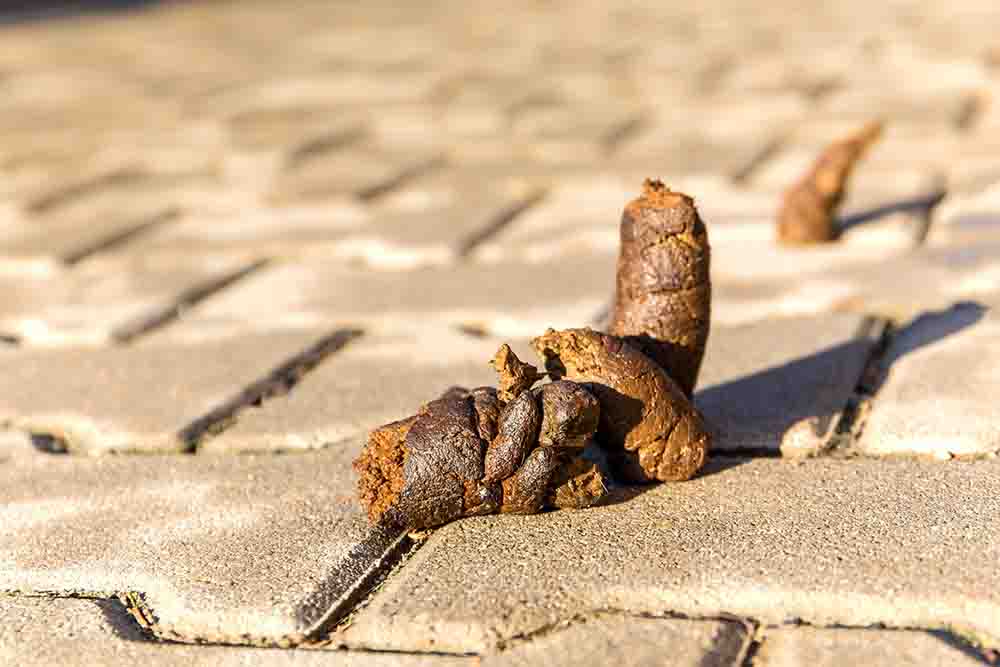
The color and consistency may occasionally change for a bowel movement or two, but any consistent change should be checked out by a veterinarian. This is especially true if your pup is showing any other signs, such as vomiting, diarrhea, lethargy or not eating.
Most Frequent Dog Poop Colors & What They Mean
Brown with white specks: Noticing white specks or spots in your dog’s poop is often a sign of internal parasites. These worms shed their white eggs in a dog’s poop to be passed on to the next host. Dogs with lots of worms may also have diarrhea with blood, weight loss, and a dry, brittle hair coat. See your vet for a diagnostic fecal test and treatment.
Black: Black dog poop is almost always a sign of digested blood. This means that there is blood entering the digestive system somewhere in the mouth, throat, stomach, or upper intestine. All of these mean bad things, so seeing more than one black dog poop should mean a vet visit. Learn more about black dog poop.
Orange: Orange dog poop is often an indication of a serious issue that is going on with your dog and should not be overlooked. Some possible causes of orange dog poop include orange pigments in something they ate (carrots, pumpkin, orange Crayola, etc.), intestinal inflammation, gallbladder disease, liver disease, or red blood cell destruction. Your vet will help determine the cause and get it treated. Learn more about orange dog poop.
Yellow: Yellow dog poop is different from orange in that it can be due to digestive issues stemming from food allergies, digestive inflammation, or foreign objects. An upset stomach every once in a while is usually nothing to worry about, but if your dog is having repeated yellow poop, it’s time to see your vet to find out why. Learn more about yellow dog poop.
White/grey: Some causes of white dog poop include old poop that has leached in the sun or medication causing your dog to poop white. It could also be due to something your dog should not have eaten, too much calcium in the diet, internal parasites, digestive issues, or liver dysfunction. Grey feces is often caused by high amounts of fat passed in the stool due to an absorptive or digestive issue. If your dog’s not on a new medication, see your vet to find out why your dog’s poop is white. Learn more about white dog poop or orange diarrhea.
Green: Green dog poop could be due to something your dog should not have eaten, their grass grazing habit, parasites, giardia, changes in diet, a diet with too much fat, rat poison ingestion, or intestinal issues. There are lots of possibilities, so let your vet find out the exact cause. Learn more about green dog poop.
Red: Bright red is almost indefinitely fresh, undigested blood. This means blood from the colon, rectum, or anus. Injuries, inflammation, infections, or even tumors can cause this type of bleeding. See your vet to find out why. Learn more about blood in your dog’s poop.
Brown but mucousy: The intestines normally have a layer of mucous to protect the lining and help lubricate bowel movements. So, the occasional mucousy dog poop is expected. What you don’t normally see is repeated bowel movements with lots of mucous. This could mean inflammation from stress, an infection, parasites, or eating something they shouldn’t have. See your veterinarian if you notice more than one bowel movement with mucous.
Dog Poop Color Chart (Illustrated Image)
You can find below a dog poop color chart along with a description and recommended action: (Keep scrolling to get this chart in a table format)

You can download this color chart in a PDF format or keep scrolling to read 2 other veterinarian tips to find out when dog poop color is a concern.
Dog Poop Color Chart (Table)
| Color | Description | Action |
| Brown with white specks | A normal bowel movement with white specks is most often an internal parasite issue. | Have your vet diagnose and treat accordingly. |
| Brown and mucousy | A little mucous is usually no big deal, but repeated slimy feces could mean inflammation of the digestive tract from infection, parasites, or stress. | Have your pup checked out if you see more than one extra mucousy dog poop. |
| Black | Black dog poop can mean your dog eats a lot of dirt, or it can mean blood (Bleeding from an injury, inflammation, or a tumor into the mouth, throat, stomach or upper intestine). | Always have your vet check out black dog poop to determine if the color is due to blood. |
| Orange | Orange dog poop nearly always relates to the liver, gall bladder, or bile ducts. It can also be due to digestive issues. | Orange dog poop can be very serious, so have your vet check it out asap. |
| Yellow | Yellow dog poop is often an issue with digestion. Inflammation, allergies, infections, or eating something they shouldn’t have could all be to blame. | Repeat yellowish poop, especially with other signs of illness, should be checked out by your vet. If your dog is healthy, try fasting for 12 hours and feeding a bland diet. |
| Red | Bright red nearly always means blood coming from the colon, rectum or anus (due to injuries, infections, inflammation, or tumors). | Fresh, red blood is scary, so have your vet check it out as soon as possible. |
| Green | Some dogs like to literally graze on grass, causing green dog poop. Green dog poop can also be a result of parasites or rat poison. | If your dog is showing other signs of illness, see a vet asap. If your dog appears healthy, try feeding a bland diet: see your vet if the green poop issue hasn’t cleared after 24-48 hours. |
| White/Grey | Dog poop turns white in the sun, but also from certain medications or something your dog ate. Gray, greasy poop is often due to high amounts of fat that is not properly broken down. | If your dog hasn’t started new medications or if their poop is very greasy, see your vet to find out why. Most repeat cases of white dog poop need veterinary intervention. |
Two Reasons Why Your Dog’s Poop Color May Be Cause for Concern
Dog poop color isn’t the only thing you should pay attention to when evaluating your dog’s health. Any repeated off-color combined with either of these other issues should warrant a veterinary visit.
- Consistency: Always pay attention to the consistency and frequency of your dog’s poop. Soft or watery feces of a different color should set off some alarms. This holds true for extra dry or feces that are difficult to pass. Needing to poop more frequently should also alert you that something’s off.
- Other signs of illness: Any other signs, such as vomiting, not eating, lethargy, stomach pain, weight loss, or fever, should be an automatic call to your veterinarian. Any of these can be a sign of a more serious issue that needs to be addressed as soon as possible.
Fun facts about dog poop
- 20.8 billion tons of dog poop is produced every year. There are about 76 million dogs in the United States (Source: AVMA). The Environmental Protection Agency estimates that the average dog generates 274 pounds of dog poop per year. This gives a total of 20.8 billion tons of dog poop made every year.
- The number of times that a dog poops per day can be affected by how many meals they have. In general, dogs poop within 20-30 minutes of eating and just after waking up, so adjusting the number of times they eat may change the number of times they poop.
- Dog poop is not a good fertilizer. Because of what they eat, dog poop can actually be too acidic for your grass and plants.
FAQ
Should you wash your hands with soap after picking up your dog’s poop?
Any time you’re handling dog poop, whether with a glove or plastic bag, you should wash your hands thoroughly with soap and water. This is because dog poop can carry bacteria and internal parasites that would love to be transmitted to humans.
What poop colors are the most worrying?
Any abnormal color to your dog’s poop can send you in a worry spiral and should be checked out by a vet if they are consistently occurring, or if your dog is showing any other signs. However, of immediate concern are black, red, or orange as these are the most life-threatening.
What poop shape/consistency is the most worrying?
Just like color, the consistency of your dog’s poop can vary a little day by day. However, really watery diarrhea can turn into a big deal very quickly because it can lead to dehydration within just a few hours.
Read More About Dog Pooping Issues:

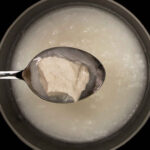


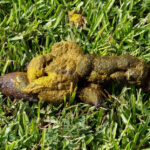
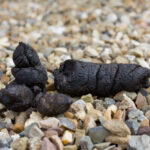

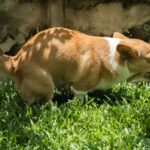


Disclaimer: This website's content is not a substitute for veterinary care. Always consult with your veterinarian for healthcare decisions. Read More.



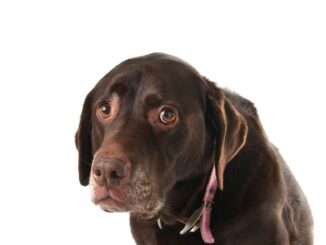
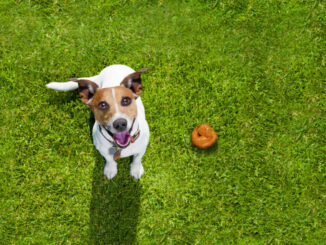
Be the first to comment